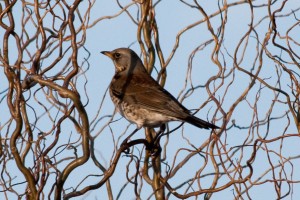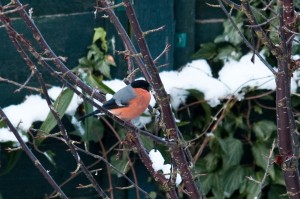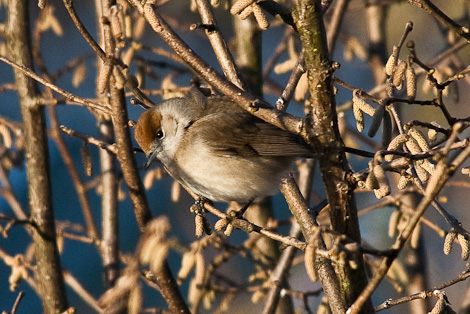
As you are no doubt aware Winter can be a great time for birdwatching. Not only do you get the Winter visitors such as Redwings and Fieldfares, but the numbers of our ‘native birds’ are swollen by imports from the rest of Europe – coming for our supposedly milder climate – I guess they have had a bit of a surprise this year, but it is still probably warmer than back home. In addition, they have fewer places to hide, unless they can find some evergreens.
Unfortunately I have found a couple of downsides to birdwatching in Winter – the weather is colder and, it is dark when I go to work and when I come home so ornithological opportunities are somewhat limited. However, I have noticed a large influx of redwings and fieldfares onto the industrial estate in the last week – they have found the sea buckthorn berries that I walk past each morning – yesterday I saw about 20 fieldfares on my way into work, not a good view in the morning gloom, but, good enough.
An added bonus for me, if not the birds this week is that a grey wagtail was tempted into the warmth of the warehouse (joining the wren and robin already there) affording rather nice views, I think it has been coaxed outside now though.

Of course, come the weekend and the opportunities for staring into the snow covered garden increase – this morning was particularly good – well, once I had replenished the feeders. As well as the usual suspects (i.e. blue tit, robin, chaffinch etc) I also spotted a total of 6 bullfinches – a record for my garden – three of each flavour and all there at the same time. We had seen three last weekend, one pair and a lone male which was tolerated by the other two. We had therefore assumed that it was one of the three chicks that had been about in the garden last summer, but to see 6 at the same time was sadly quite exciting after all, this is a bird that has just made it off the BTOs red list of conservation concern. These handsome little birds that spend their time in pairs and make a sound like a squeeky bicycle pump tie with long-tailed tits as my favourite birds. (They are edging into the lead at the moment as they are regulars in the garden so they earn extra points on the lovely birds register.)
None of these would be about if there were no food for them, so please make sure you feed the birds in winter, particularly when it is cold and the ground is covered and frozen – the ones in my garden are particularly fond of sunflower hearts.
